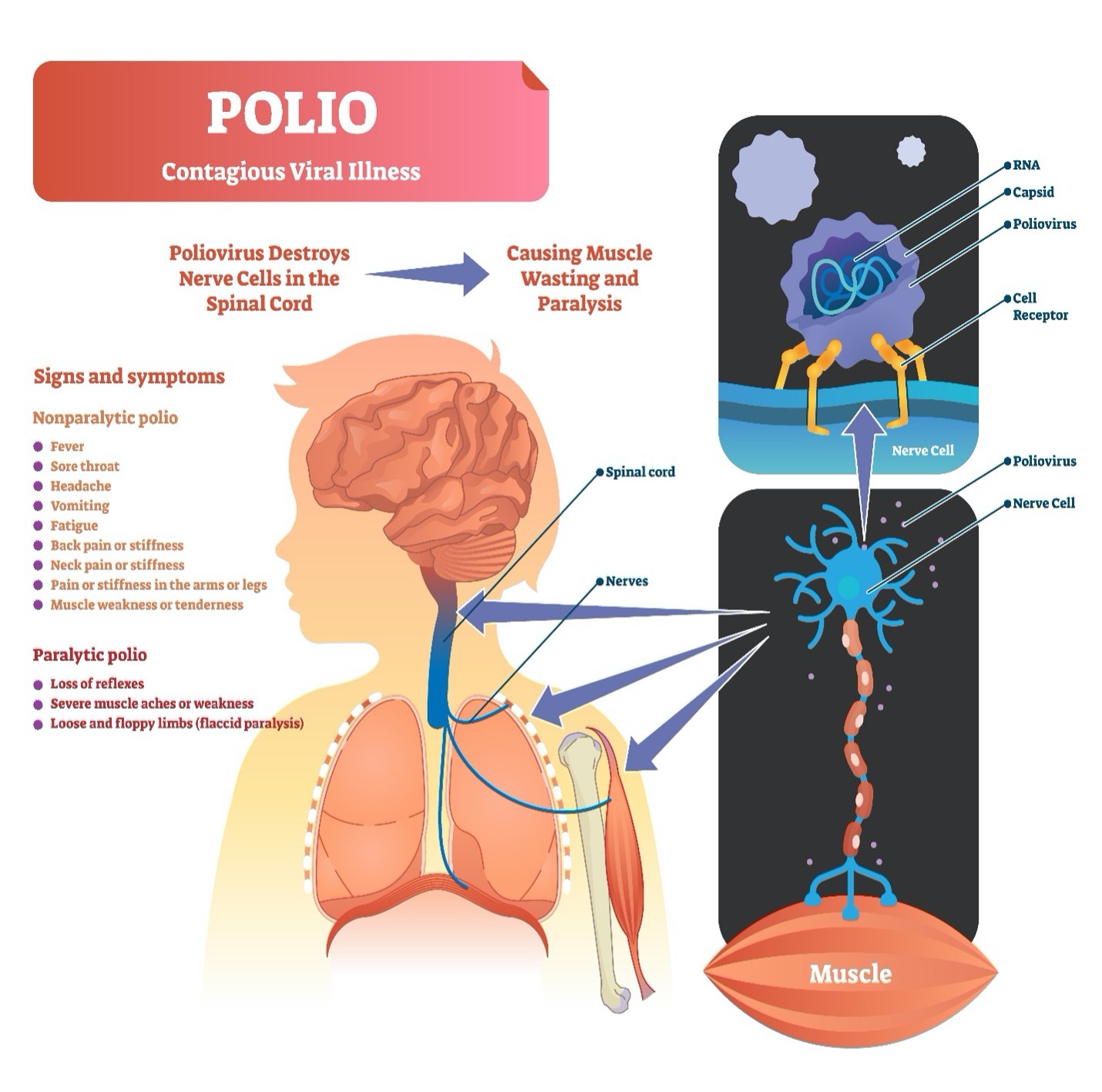Post Polio Syndrome
Table Of Contents
- Introduction
- Exploring the Dynamics of Post-Polio Syndrome
- Understanding the Management and Treatment Options
- Navigating Life with Post-Polio Syndrome
- Support networks
Introduction
Post-Polio Syndrome (PPS) is a complex condition that affects individuals who have previously contracted and recovered from polio, a viral infection that primarily affects the nervous system. While polio survivors may have initially recovered from the acute effects of the virus, they may experience new or worsening symptoms years or decades later. In this blog post, we’ll delve into the intricacies of Post-Polio Syndrome, explore its symptoms, management strategies, and available support services, and provide valuable insights for individuals and families affected by this condition.
Exploring the Dynamics of Post-Polio Syndrome
Post-Polio Syndrome is characterized by a set of symptoms that may develop years or decades after the initial polio infection. These symptoms may include:
- Progressive muscle weakness: Individuals with PPS may experience gradual muscle weakness, fatigue, and decreased endurance, particularly in muscles that were previously affected by polio.
- Muscle atrophy: Loss of muscle mass or muscle wasting may occur in affected muscles, leading to weakness, decreased mobility, and functional limitations.
- Joint pain and stiffness: PPS can cause joint pain, stiffness, and discomfort, particularly in areas where muscles have weakened or atrophied, leading to decreased range of motion and mobility.
- Fatigue and exhaustion: Fatigue is a common symptom of PPS, often described as overwhelming tiredness or exhaustion that is not relieved by rest and may interfere with daily activities and functioning.
- Breathing difficulties: PPS may affect the muscles involved in breathing, leading to respiratory problems, such as shortness of breath, difficulty breathing, or respiratory infections.
- Swallowing and speech difficulties: Weakness in the muscles involved in swallowing and speech may result in dysphagia (difficulty swallowing), dysarthria (slurred speech), or other speech-related issues.
Understanding the Management and Treatment Options
While there is no cure for Post-Polio Syndrome, management strategies focus on symptom relief, improving function, and enhancing quality of life. Treatment options may include:
- Physical therapy: Engage in tailored exercise programs and physical therapy interventions to strengthen muscles, improve mobility, and optimize functional abilities.
- Assistive devices: Use assistive devices, such as braces, orthotics, canes, walkers, or mobility aids, to support weakened muscles, improve balance, and facilitate mobility.
- Pain management: Manage pain and discomfort associated with PPS through medications, physical therapy modalities, relaxation techniques, and alternative therapies.
- Respiratory support: Address respiratory problems and breathing difficulties through pulmonary rehabilitation, breathing exercises, respiratory therapies, or assistive devices, such as ventilators or breathing aids.
- Speech therapy: Participate in speech therapy sessions to improve swallowing function, speech clarity, and communication skills affected by PPS-related muscle weakness.
Navigating Life with Post-Polio Syndrome
Living with Post-Polio Syndrome presents unique challenges, but with the right support, resources, and resilience, individuals can adapt, cope, and thrive. Here are some strategies for navigating life with PPS:
- Self-care: Prioritize self-care activities, such as adequate rest, balanced nutrition, stress management, and relaxation techniques, to support overall health and well-being.
- Energy conservation: Pace activities, prioritize tasks, and conserve energy to manage fatigue and prevent overexertion, allowing for optimal functioning and participation in meaningful activities.
- Accessibility and adaptation: Make necessary modifications to the home environment, workplace, or community settings to improve accessibility, safety, and independence for individuals with PPS.
Support networks
Seek support from family, friends, support groups, and healthcare professionals who understand and can provide guidance, encouragement, and practical assistance.
“At Arunalaya Healthcare, we pride ourselves on being the best physiotherapy center in Delhi. Our dedicated team of experts offers top-notch physiotherapy treatment tailored to your needs. Experience the difference with the leading physiotherapy clinic in Delhi area. Our commitment to excellence ensures that you receive the best physiotherapy care possible. Trust Arunalaya Healthcare for the best physiotherapy treatment in Delhi. Our advanced physiotherapy solutions set us apart as the premier choice for your rehabilitation needs. When it comes to physiotherapy, our center stands out as the best in Delhi. Choose Arunalaya Healthcare for comprehensive physiotherapy solutions that deliver results. Visit Arunalaya Healthcare today and discover why we are the best physiotherapy center in Delhi.”
Physiotherapist in Patel Nagar | Physiotherapist for Home Visit in Patel Nagar | Physiotherapy in Karol Bagh | Best Physiotherapist in Punjabi Bagh | Physiotherapist Near Me | Physiotherapy Near Me | Best Physiotherapist in Delhi | Best Physiotherapist in India | Physiotherapy Center in Rajendra Place | Knock knee Clinic Near Me | Back Pain Physiotherapy Near Me | Sports Physiotherapist in Delhi | Stroke Physiotherapy | Paralysis | Cerebral Palsy | Best Sports Injury Physiotherapist in Delhi | Best Sports Injury Physiotherapy in Delhi | Physiotherapy Home Service | Physiotherapy at Home | Home Visit Physiotherapy | Advanced Physiotherapy in Delhi | Physiotherapy Clinic Near Me

